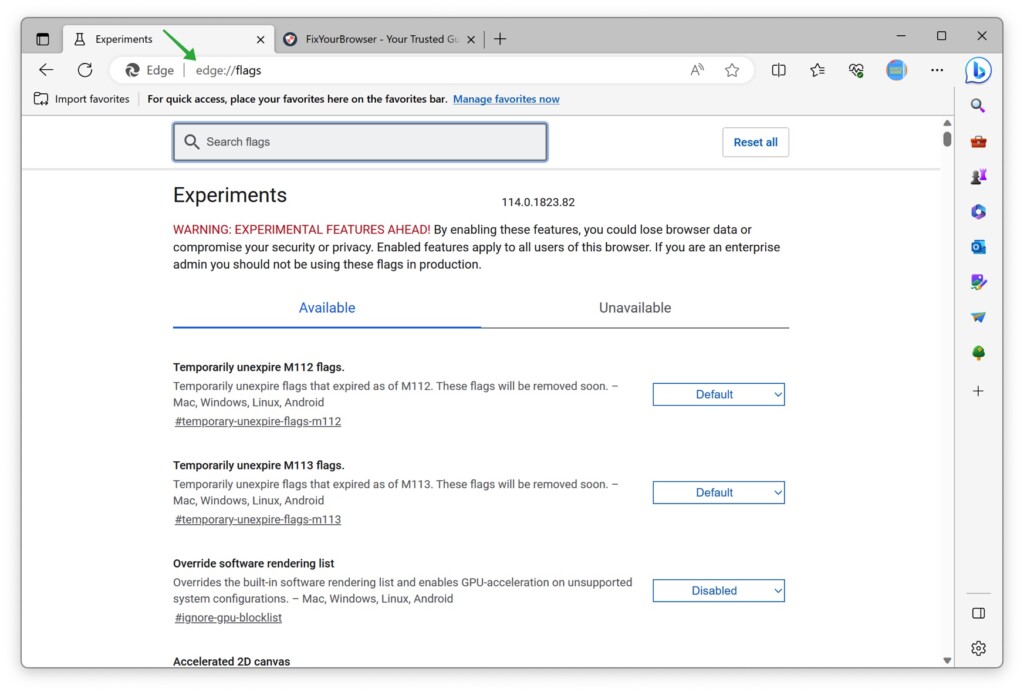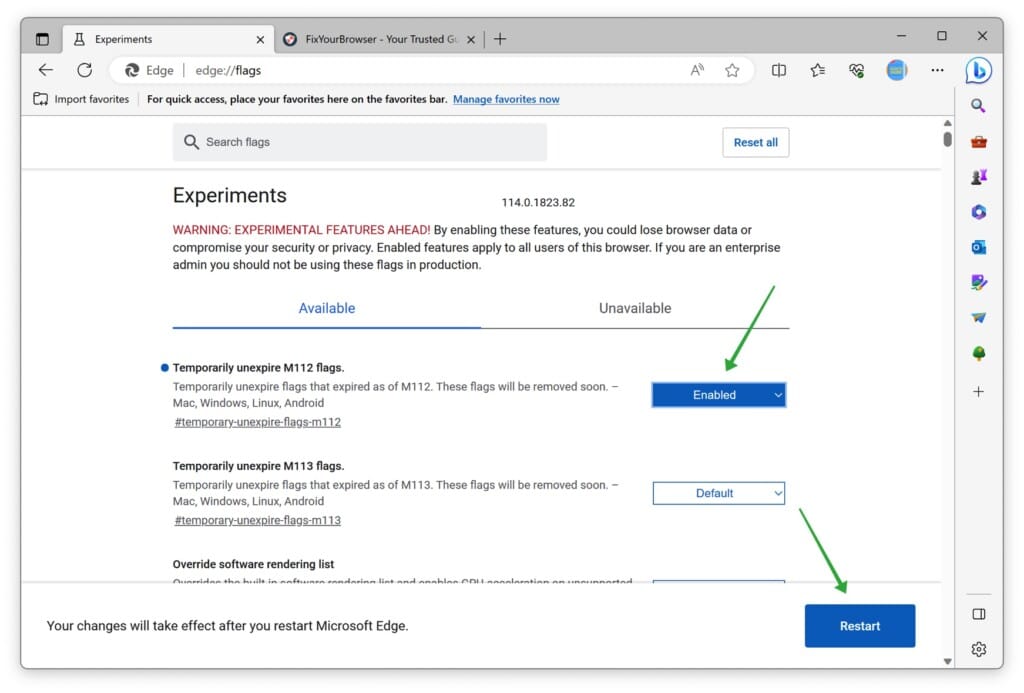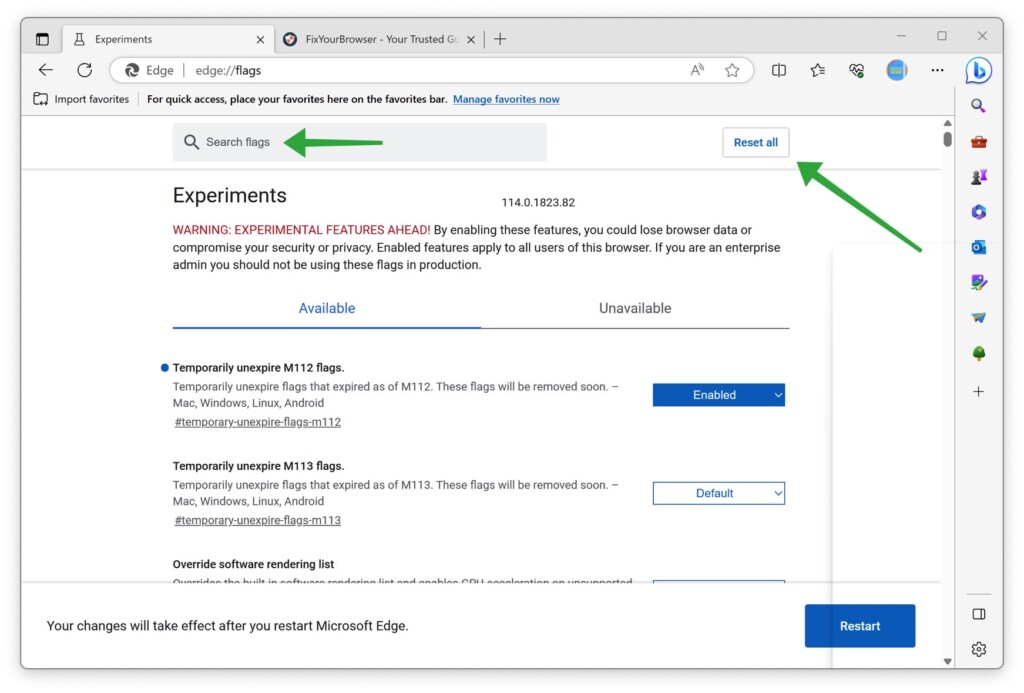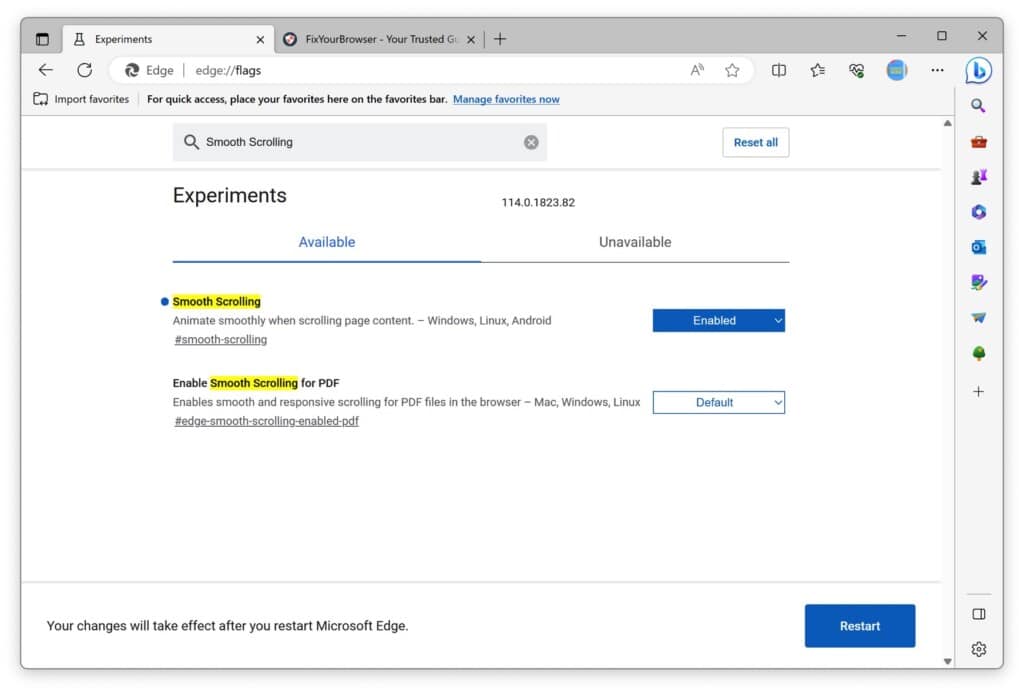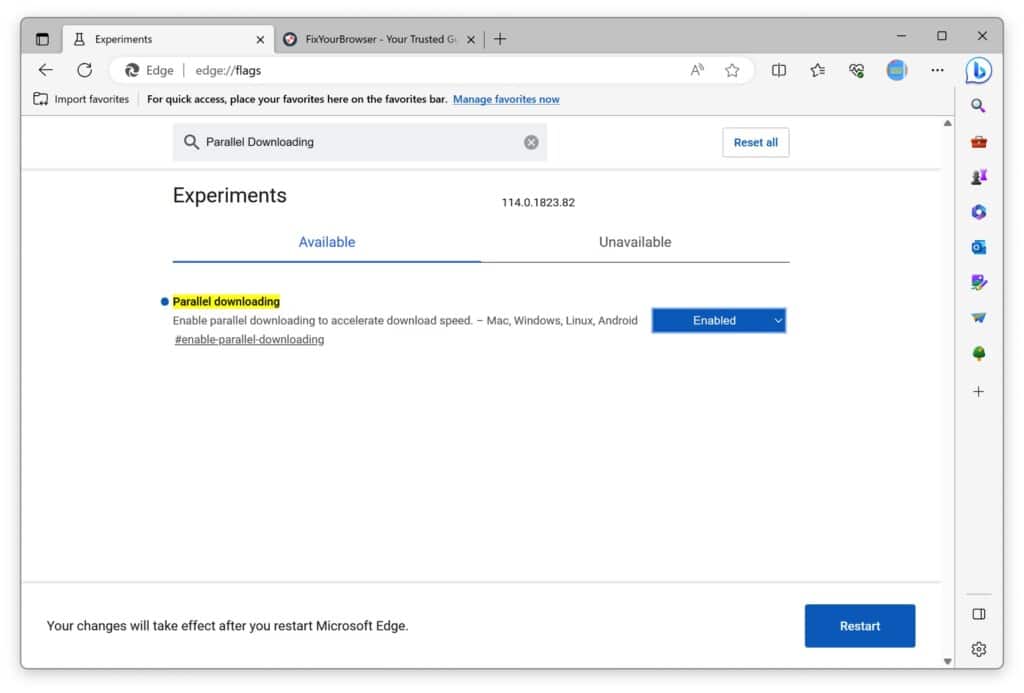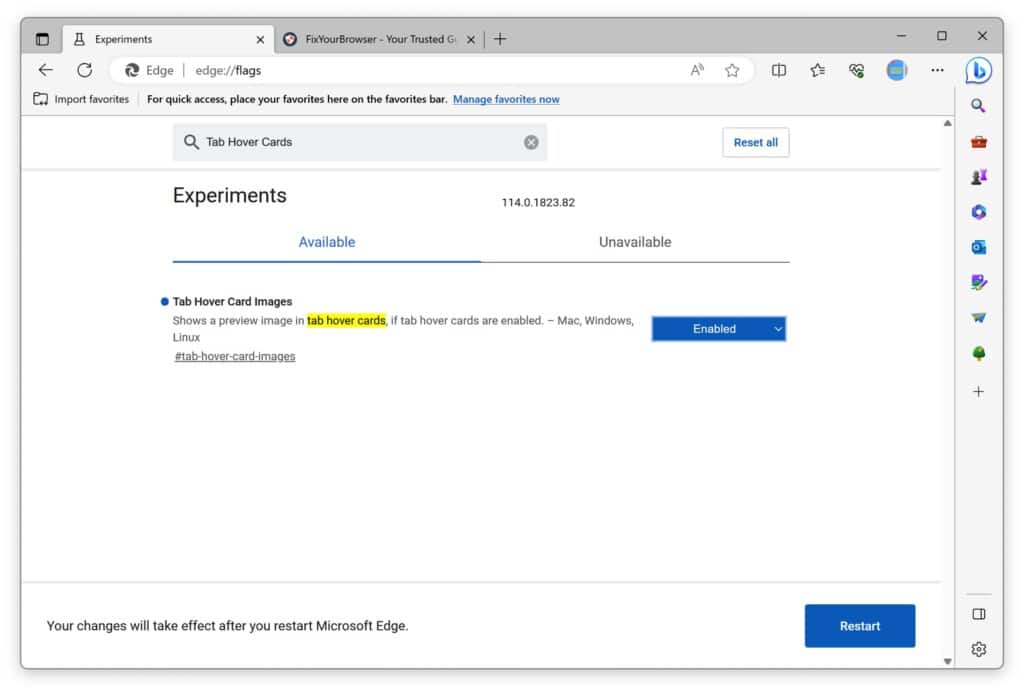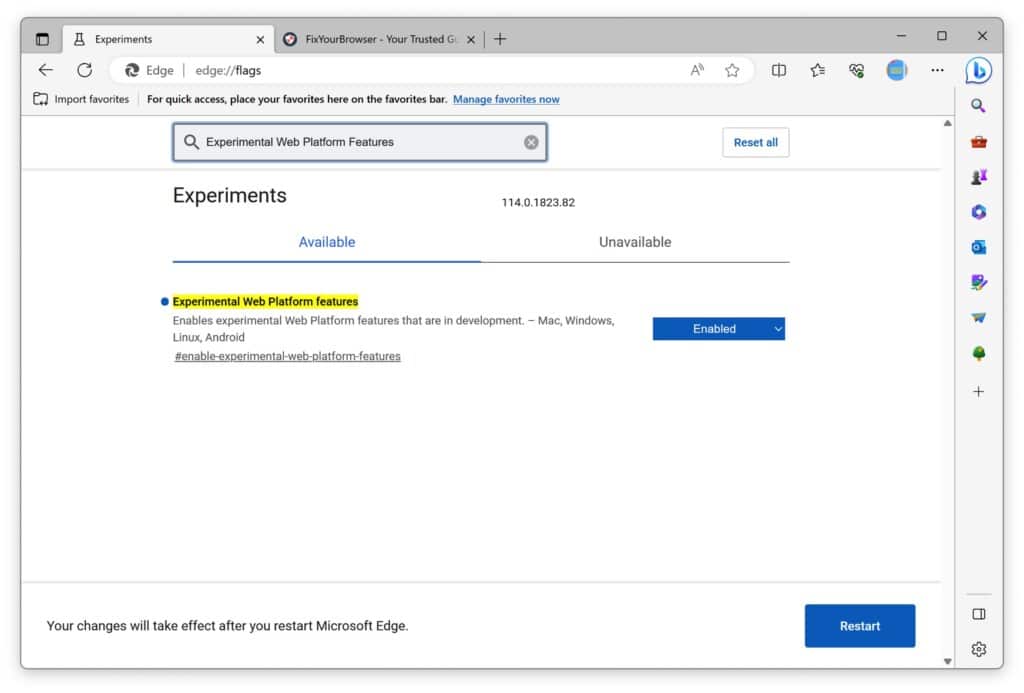In Microsoft Edge, similar to Google Chrome, hidden settings are available. This is unsurprising because the Edge browser is based on Chromium, just like Google Chrome.
The hidden settings in Microsoft Edge, also known as “flags” or “experiments,” are various experimental features and advanced options that have not yet been fully integrated into the browser or are still in the testing phase.
By accessing these hidden settings, you can modify browser settings and experiment with new features that may not be available to the general public. These features are often designed to improve performance, security, and user experience but may not be stable or fully functional.
A new version often replaces these features. So, if you enable a particular feature through the hidden settings, this feature may disappear or be disabled in a future version. Keep this in mind when making changes.
How to access Microsoft Edge hidden settings
To open the hidden settings or “flags” menu, type the following in the address bar: edge://flags/
You will then see a notification: “By enabling these features, you could lose browser data or compromise your security or privacy. Enabled features apply to all users of this browser. If you are an enterprise admin you should not be using these flags in production.”
You can enable a hidden feature by changing the status of the feature from “default” to “enabled.” After that, confirm the save and restart the Microsoft Edge browser.
If you are looking for a specific feature, you can search for the feature name in the “search flags” field at the top. You will also see a “reset all” button on the right side of the search field to restore all features to their original status.
These are the most useful experimental Microsoft Edge features found in the hidden settings
Here is a list of the most well-known experimental Microsoft Edge features still working while writing this article.
- Smooth Scrolling: Improves the scrolling experience on web pages by enabling smoother and more responsive scroll movements.
- Parallel Downloading: This setting utilizes parallel connections to enable faster downloads of resources like images, resulting in faster loading of web pages.
- Tab Hover Cards: Displays informative cards when you hover over a tab, allowing you to preview the tab’s content without actually opening it.
- Hardware Media Key Handling: Enables media keys on your keyboard (play/pause, next, and previous) to play or control media in the browser, such as videos or music.
- Experimental Web Platform Features: These are various experimental web platform features that are not yet fully standardized but can be enabled by web developers to explore and test new capabilities in web applications.
- Auto Dark Mode for Web Contents: This setting forces a dark mode on all websites, even if they don’t support a default dark mode. It can be helpful if you prefer a dark display while browsing through Edge.
- Show Block Option in Autoplay Settings: You can customize autoplay settings for media content, such as automatically playing website videos.
I hope this information has been helpful to you. Thank you for reading!
Also, read these 10 ESSENTIAL privacy settings in Microsoft Edge.

